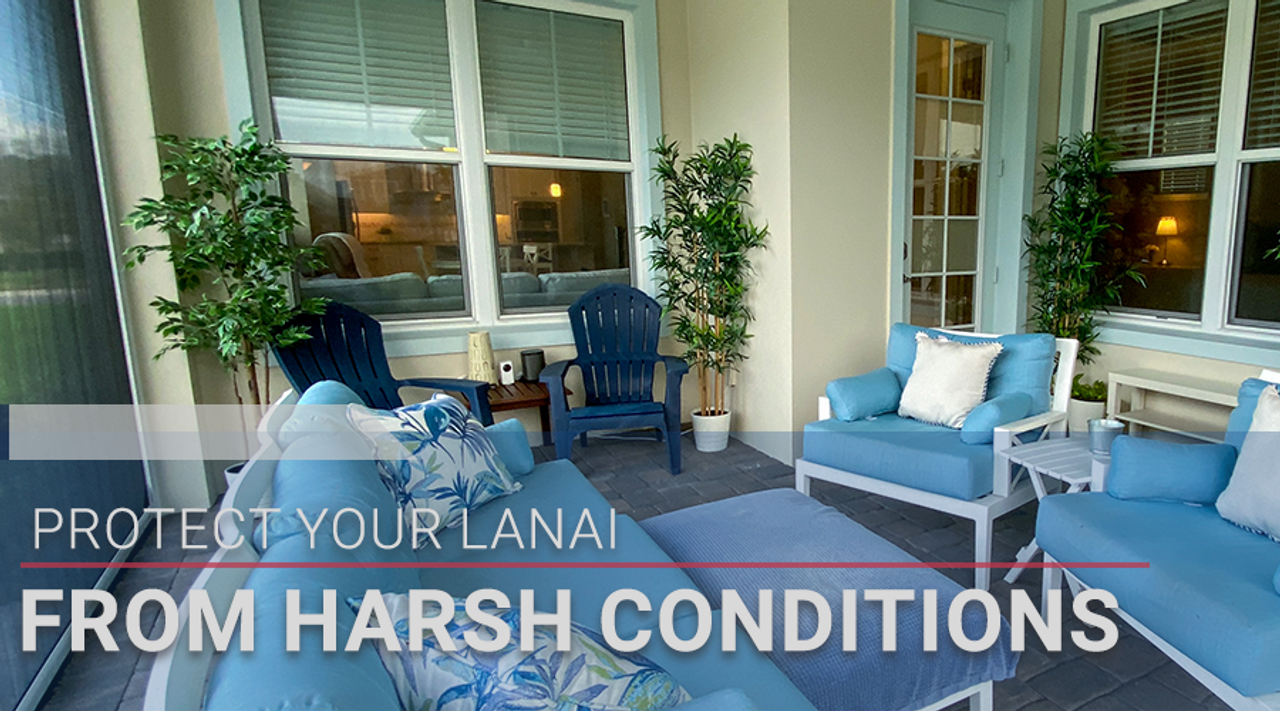Your lanai is one of the most valuable parts of your home. It’s where you relax, entertain, and enjoy the outdoors—but it’s also constantly exposed to the elements. For homeowners in coastal regions or areas with extreme weather, salt air, humidity, heavy rains, and strong winds can quickly take their toll. Without proper care and the right materials, a lanai can deteriorate faster than you might expect.
In this guide, we’ll explore the common threats to your lanai, how to prevent damage, and why choosing the right fasteners and hardware is key to protecting your investment.
Why Salt Air and Harsh Weather Are So Damaging
Salt air may seem harmless, but it’s one of the most corrosive natural elements your lanai will face. Salt particles carried by the wind land on your screens, aluminum framing, and especially the fasteners holding everything together. Over time, this salt works its way into the tiniest cracks, causing rust, pitting, and corrosion.
Pair that with humidity, heavy rains, and storm winds, and you have the perfect recipe for structural weakening. The most common result? Rusted screws, loose framing, and costly repairs.
Common Signs of Weather Damage on a Lanai
If your lanai has been exposed to harsh conditions for several years, look out for these warning signs:
-
Rusting screws or fasteners—Orange or brown stains around screw heads are early signs of corrosion.
-
Loose framing—Wind and rain can loosen fasteners, making the structure less stable.
-
Screen damage—Tears, sagging, or holes in screens are often caused by weakened frames.
-
Discoloration on aluminum—Electrolysis, caused by dissimilar metals touching, leads to deterioration of aluminum posts.
-
Pooling water around fasteners—This indicates gaps or “gullies” that collect moisture and accelerate corrosion.
Catching these issues early can save you from expensive repairs later.
Steps to Protect Your Lanai from Salt Air and Harsh Weather
1. Choose Rust-Proof Fasteners
Standard screws corrode quickly in coastal climates. Upgrading to stainless steel or specially designed rust-resistant fasteners ensures your lanai stays secure for the long term.
2. Use Protective Sleeves and Caps
Innovative systems like protective sleeves and nylon caps prevent water and salt air from reaching the screw shaft and head. This not only stops rust but also prevents aluminum deterioration from electrolysis.
3. Seal and Inspect Regularly
Applying a weather-resistant sealant around connections and joints helps reduce moisture intrusion. Pair this with regular inspections (at least twice a year) to check for early signs of rust or loosening.
4. Clean Away Salt Buildup
Salt doesn’t just damage fasteners—it also stains aluminum and screens. Rinse your lanai with fresh water every few weeks, especially after storms or windy days. A gentle wash goes a long way toward preventing long-term corrosion.
5. Prepare for Storm Season
In areas prone to hurricanes or heavy storms, your lanai faces additional stress. Reinforce vulnerable spots with stronger anchors, and check that all fasteners are properly tightened before storm season begins.
The Long-Term Benefits of Choosing the Right Hardware
While it may be tempting to save money with standard fasteners, the long-term costs of replacing rusted screws and repairing damage can be far greater. Investing in high-quality, corrosion-resistant hardware ensures:
-
Structural integrity—your lanai stays safe and secure.
-
Lower maintenance costs—fewer repairs and replacements over time.
-
Better appearance—no more rust stains on your aluminum framing.
-
Peace of mind—confidence that your lanai can withstand salt air and storms.
Final Thoughts
Your lanai should be a space you enjoy, not a constant source of worry. By choosing the right materials and following regular maintenance, you can protect it from the harsh effects of salt air, humidity, and extreme weather.
The right fasteners and protective systems are not just small details—they’re the foundation of a lanai that lasts for years. Take the time to upgrade now, and you’ll save yourself from bigger headaches down the road.

